'It's not impossible for Latin American players to make it': Latino players have struggled to make it in the NBA. The league built a pipeline to open the region
- Oops!Something went wrong.Please try again later.
- Oops!Something went wrong.Please try again later.
- Oops!Something went wrong.Please try again later.
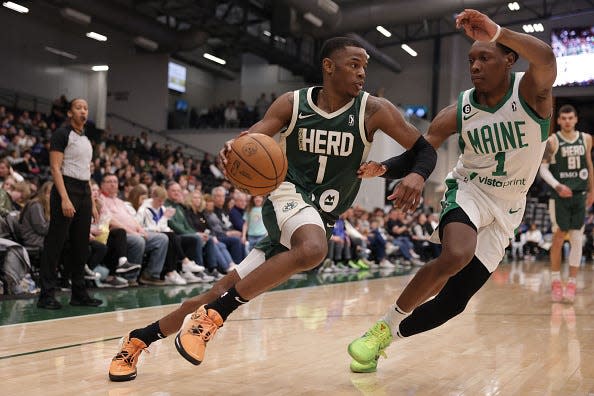
In December when the NBA G League's Wisconsin Herd hosted the Fort Wayne Mad Ants at the Oshkosh Arena, it was an opportunity for Iverson Molinar to feel at home on the court – even if it was just for one conversation.
The Herd rookie has been in the United States for about eight years since moving from his home country of Panama when he was 15.
During warmups he met with Indiana Pacers guard Chris Duarte, who spent a brief time with the Mad Ants while rehabilitating an injured ankle.
“We talked a little bit. He told me how everything is,” Molinar said.
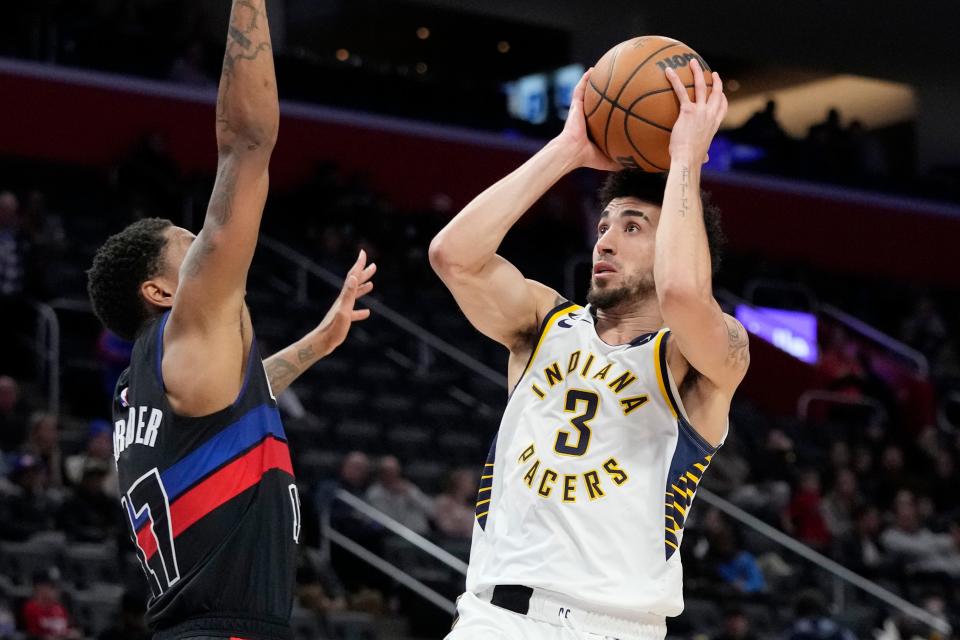
Iverson said he and Duarte, who is from the Dominican Republic, spoke in Spanish about the game and life back in their home countries.
In Duarte, Iverson saw what was possible for him.
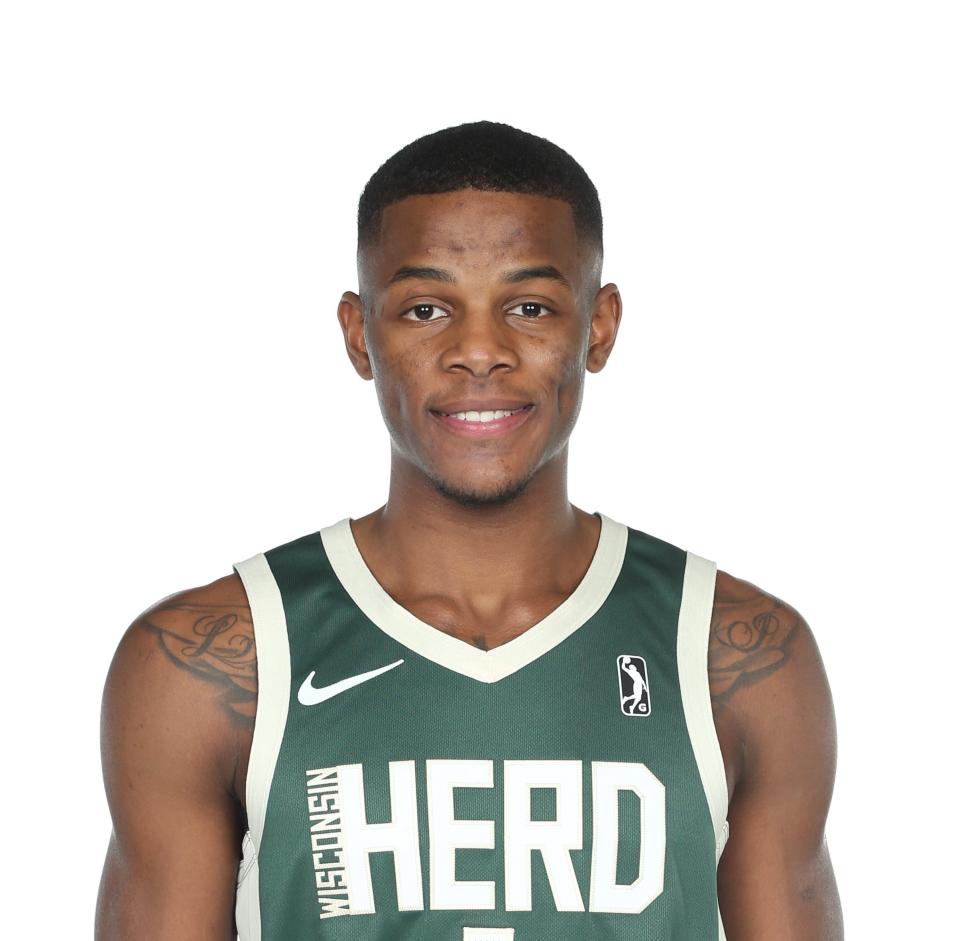
“You look up to that and you think it can be possible,” Molinar said. “You’re right there knocking on the door. It feels like it’s achievable. It’s not impossible for Latin American guys to make it to the NBA.”
Latin American players have played in the NBA for decades. For example, Dominican Tito Horford was drafted by the Milwaukee Bucks in 1988 and played two seasons in the league. Tito's son Al plays for the Boston Celtics.
But there were only 10 NBA players from that part of the world at the start of the 2022-23 season.
There are several players in the league who have Latino heritage, such as Bucks center Brook Lopez, who is Cuban American.
But there could be an increase of players from Latin America as the NBA has developed a pipeline that goes from introducing kids to the sport to identifying top prospects and then playing professionally.
It’s the only region outside of the United States with this level of infrastructure. And the biggest difference is the newly established Capitanes de Ciudad de México in the G League.
“It’s based in Mexico but it represents all of Latin America,” said Marc Pulles, NBA Mexico basketball operations senior director. “We have players from Brazil, the D.R. (Dominican Republic), from Mexico, from Puerto Rico, from Venezuela and this has been very exciting.”
The Capitanes also have American-born players, including former University of Wisconsin-Green Bay forward Alfonzo McKinnie.
But generally, the league is hoping that having a team in Mexico opens the region even more to potential players.
“We’re very excited to see if they (the Capitanes) can be a great or good pathway for players in the region to take the next step to the NBA in the near future,” Pulles said. “This is a project. It’s a long-term project that we are, of course, helping them to be part of the league. And of course, all change takes time. So we’re doing our best to try to make sure this transition to the G League is the best.”
The Capitanes finished their second season as a G League team. The team was initially supposed to start in the 2020-21 season but the coronavirus pandemic caused their season to be canceled. The next year they played only 12 games, in the United States, again, because of the coronavirus.
This past season was the first time the team played its home games in Mexico.
“People are very excited around Mexico City and across the region with the team. And the fact of having players from the region is helping them (attract a following),” Pulles said.
7,000 people in attendance for a G-League regular season game. Basketball in Mexico is just different! 🇲🇽🔥 pic.twitter.com/I2s028V9tA
— Eduardo Villalpando (@eduardo_vhmx) February 2, 2023
Hooping in Panama City
In Panama City, Molinar’s father, Manuel, put a basketball in his son's hands at 5 years old. And unlike a lot of his peers who played in AAU tournaments and gyms, Molinar learned the game outdoors in Panama.
“We actually played in the streets. We played on cement,” Molinar said. “You can see a lot of scars on my legs and on my arms from all the falls I took back in the day.”
Playing on concrete didn’t mix well with his shoes.
“My mom would get mad at me because I’d destroy shoes within weeks,” Molinar said. “Playing with brand new shoes on concrete, it’s not a good idea... there would be times when I was growing up that I had just two shoes and I really had to take good care of them.”
When he was 13, Molinar was sending videos of himself playing to high school coaches hoping one of them would take a chance.
“There would be scouts coming to Panama to see me play,” Molinar said. “One day, one of the (high school) coaches came here and he gave me the opportunity and I took advantage of it, ... Even though I didn’t know a lot of English, I was still trying to communicate with them and learn as much as possible.”
Adjusting to life in the U.S.
His first year in America was difficult.
“From speaking no English at all to speaking it everyday, of course it’s a challenge,” Molinar said. “I had to pay close attention to people talking and the slang. ... I had to get used to it and actually had to learn it and get comfortable with it every day.”
In that first year, Molinar went to high school in Los Angeles and stayed with a host family, which didn’t make the process any easier.
“They didn’t speak Spanish at all,” Molinar said. “It was a big challenge for me to even communicate at home.”
NBA Academy in Mexico
Molinar’s journey from Panama to the United States is the typical immigrant story of struggle to learn the language and culture. And finding ways to overcome those challenges.
In 2001, the NBA teamed up with International Basketball Federation (FIBA) to foster a love of the game and develop talent internationally. The Basketball Without Borders events in the Americas helped develop former Milwaukee Bucks players such as Luca Vildoza from Argentina, Greivis Vásquez from Venezuela and Thon Maker from Australia.
✨ SHOWTIME BUCKS ✨
¡Luca Vildoza y Thanasis Antetokounmpo poniendo el show!
La felicidad de Giannis lo es todo 😁#NBAPlayoffs pic.twitter.com/yRul43Zw62— NBA Latam (@NBALatam) April 23, 2022
In 2017, the NBA Academy Latin America located in San Luis Potosí, Mexico started and is trying to reduce some of those burdens for men and women players in the region, including Canada, through a wholistic approach and learning environment.
“Once you join the program, we are getting you ready for the next step,” Pulles said. “These kinds of adjustments that players had to do in the past, luckily for our NBA Academy players, it’s not like that. Everything in English... even the schooling that they’re doing is tailor made for them to ensure they have the opportunity to join a college in the NCAA. We have them learn about how to eat, what to eat, to adjust to the food. All these kinds of topics, they might be an issue for a player once he moves out of his country, we try to solve it at the NBA Academy in the early stages.”
Pacers guard Bennedict Mathurin is the first player from the NBA Academy Latin America that has made it to the league.
“I’m sure there’s going to be more players (from the NBA Academy Latin America) in the NBA in the near future,” Pulles said.
The NBA Academy Latin America has also sent players to Division I colleges, including Marquette forward Oliver-Maxence Prosper.
Pulles said college and NBA scouts are gaining more interest in players from the region and seek out the NBA Academy in Mexico.
“It’s totally worth coming to watch one game at the NBA Academy or one practice because the top prospects in the region are there,” Pulles said.
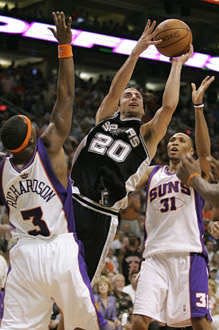
Bucks head coach Mike Budenholzer said Latino players have found success in the league and “it’s good to celebrate that.”
“To me, Manu Ginóbili from Argentina, and what he brought to the game was incredible.” Budenholzer said. “The sport is growing, and the NBA is finding talent in players everywhere.”
Ginóbili was a four-time NBA champion with the San Antonio Spurs, a two-time NBA all-star and earned numerous other league honors.
When the Pacers played the Bucks in Milwaukee in March, Duarte was injured and didn’t make the trip. Pacers head coach Rick Carlisle said Duarte was “disappointed” he missed the game because it was Noche Latina night in Milwaukee.
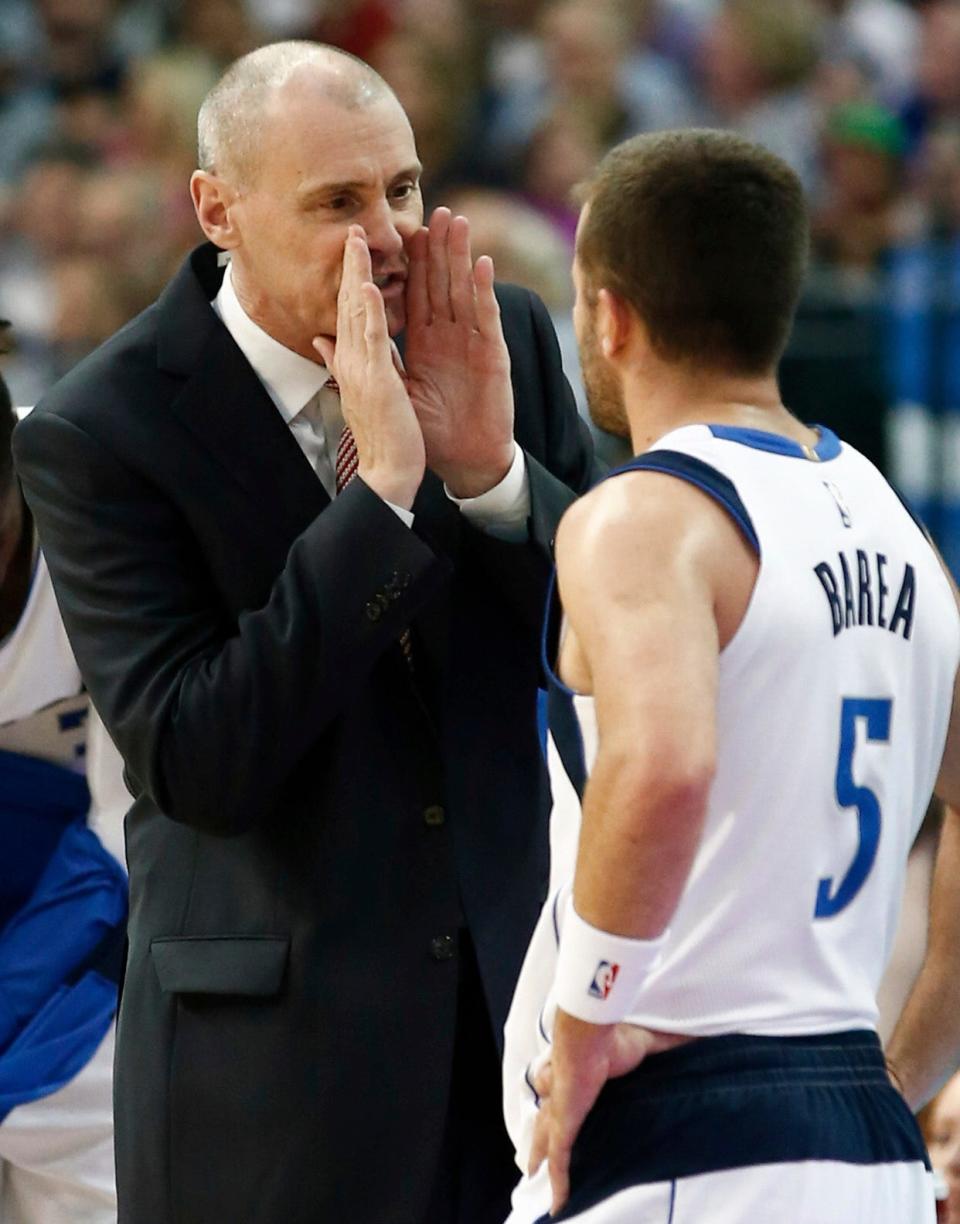
But Carlisle, whose Dallas Mavericks won an NBA championship in 2011 with Puerto Rican point guard J. J. Barea, said Latino players bring “a lot of passion, a lot of love for the game.”
“I coached JJ Barea for many, many years,” Carlisle said. “I’ve had great experiences with Latino players. I see more and more really great players coming out of those countries.”
It’s #NocheLatina night at the #Bucks game with the #Pacers in town. I asked Indiana HC Rick Carlisle about the impact of Latino players in the NBA pic.twitter.com/iPZJxv81be
— Ricardo🇨🇺 🇵🇷Torres Ⓜ️ (@RicoReporting) March 17, 2023
The NBA looks to former players like Ginóbili and Barea to represent the league and the sport in their home countries, particularly with Jr. NBA, which focuses primarily on introducing the sport to younger children.
On March 7, the league named former Bucks player Gustavo Ayón a Jr. NBA ambassador in Mexico. In this newly created role, Ayon will support the league’s grassroots basketball development efforts that reach millions of youth across the country every year, including the Jr. NBA.
"He’s a legend in Mexico. So all the kids know him,” Pulles said. “Having these kinds of players that have grown the game and have been important in the NBA, it’s always great for us because the kids see them as idols. And of course it gets more kids to play.”
Transition from high school to Mississippi
Molinar bounced between high schools in L.A. and Atlanta and was offered a scholarship to play at Mississippi State.
Just when he was starting to feel comfortable with English, he had to get used to how they talk in the deep south.
“They got different slang out there and the accent makes it more difficult to understand,” Molinar said. “My first couple of months I struggled to understand people from Mississippi.”
Basketball became more of his “safe place,” and it worked. Molinar was voted first-team all-Southeastern Conference by the coaches in 2022 and received the Howell Trophy for best college basketball player in Mississippi.
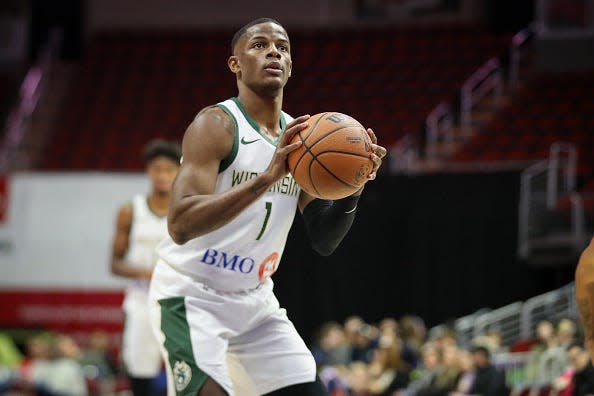
Playing with the Herd
Molinar went undrafted and landed with the Wisconsin Herd for the 2022-23 season. In his rookie year he played in 22 games and averaged 10.5 points, 2.7 rebounds and 2.6 assists per game.
Although he’s 4,000 miles from Panama City, he still has his culture with him.
In the weight room he’ll play reggaeton artists such as Bad Bunny, Farruko and Anuel AA, and his teammates jam along with him.
“Someone will come and they’ll start dancing to it... some of them are familiar with it,” Molinar said. “Now and then with some of my teammates, they’ll know some Spanish and I’ll try to play with them back in Spanish.”
A few teammates will try to say something in Spanish phrases to mess with Molinar, but he “would just laugh because I know what they’re talking about but they’re not pronouncing it right.”
But on the court, does he talk trash in English or Spanish? His answer is both.
“If I don’t want nobody to understand what I’m saying, I’ll say some stuff in Spanish,” Molinar said. “That’s all I can say right now. ... I don’t want to let (the referees know) then next game they give me a tech because I say something in Spanish."
This article originally appeared on Milwaukee Journal Sentinel: How the NBA built a pipeline for Latino players to enter the league

